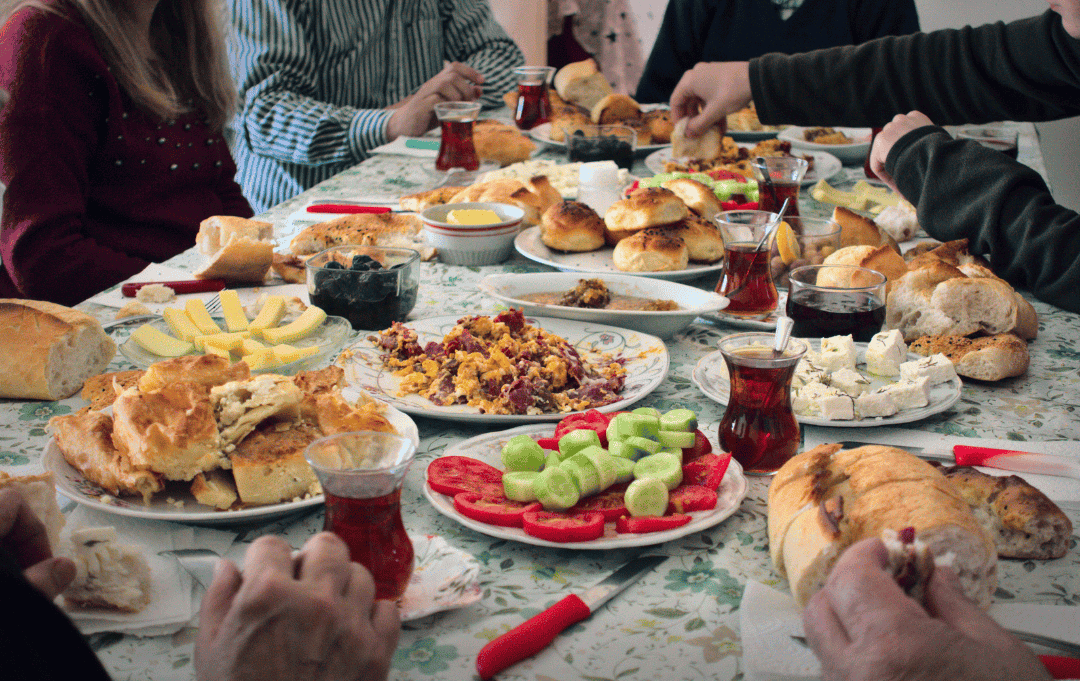Balanced Eating For Eid Al-Fitr: Expert Tips For A Healthier Celebration
Eid al-Fitr is a time of great joy and celebration among Muslims around the globe, marking the end of the holy month of Ramadan. In Pakistan, this festive occasion is characterized by special prayers, family gatherings, and, inevitably, an array of delicious dishes. However, amidst the festivity, it’s crucial to remember our health, especially for those among us managing conditions like diabetes. Eating healthily during Eid doesn’t mean you have to compromise on the celebratory essence of the festival. Here’s how you can do just that, with a special focus on the Pakistani community and individuals with diabetes.
Eid Breakfast: The Healthy Kickstart
The day begins with a special Eid prayer, after which families sit down for their first daylight breakfast in a month. It’s tempting to indulge, but this meal sets the tone for the day. Opt for a balanced breakfast that includes complex carbs, protein, and healthy fats. Traditional items like chana chaat can be prepared using less oil and more vegetables. Whole grain bread or parathas, along with yogurt or milk, provide a good mix of energy and nutrition, keeping blood sugar levels stable.
Smart Choices for the Main Feast
Eid in Pakistan is synonymous with special dishes like biryani, sheer khurma, and a variety of meat preparations. Here’s how you can enjoy these while making smart choices:
- Biryani: Opt for brown rice instead of white and increase the proportion of vegetables to meat. This can help lower the glycemic index of the dish.
- Meats: Choose lean cuts of meat and consider grilling or baking instead of frying. Spices can add flavor without the need for excess oil.
- Desserts: Sheer khurma, a traditional vermicelli and milk dessert, is a staple. Try substituting full-fat milk with low-fat versions and reduce the sugar by half, compensating with natural sweeteners like dates or raisins.
Portion Control and Mindful Eating
With all the delicacies on offer, it’s easy to overeat. Practice portion control by starting with small servings. Eid is a day of leisure; take your time to eat slowly and savor each bite. This not only enhances the eating experience but also helps in recognizing when you’re full, reducing the chances of overeating.
Incorporating Fruits and Vegetables
Amid the meats and sweets, don’t forget the greens. Salads and vegetable dishes are not only refreshing but also necessary for a balanced diet. They provide fiber, which is essential for blood sugar control. A simple cucumber or mixed vegetable salad with a sprinkle of lemon juice can be a refreshing side dish.
Healthy Snacking
Eid gatherings often last all day, and it’s customary to have snacks available. Nuts and dried fruits are excellent choices. They provide healthy fats, fiber, and protein, keeping you satisfied and preventing blood sugar spikes.
Stay Hydrated
With the summer heat in Pakistan, staying hydrated is crucial. Water is your best friend, but for those looking for variety, homemade lemonade with minimal or no sugar, or mint-infused water, can be refreshing options. Avoid sugary sodas and processed juices.
Engaging in Physical Activities
Lastly, incorporate some form of physical activity into the day. A family walk, a game of cricket, or any light sport not only aids digestion but also keeps everyone engaged and active.
Conclusion: Celebrating Eid with Health in Mind
Celebrating Eid al-Fitr healthily in Pakistan, especially for those with dietary concerns like diabetes, is all about making mindful choices without missing out on the festivities. It’s a time for gratitude, reflection, and togetherness. By planning your meals, opting for healthier alternatives, and maintaining balance, you can enjoy the Eid feast without compromising your health. Let this Eid be a celebration of not just spiritual renewal but also physical well-being. Eid Mubarak!


